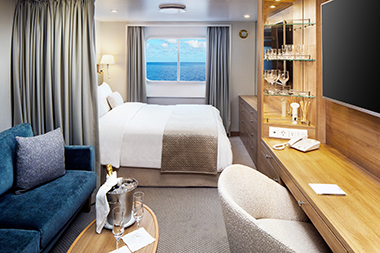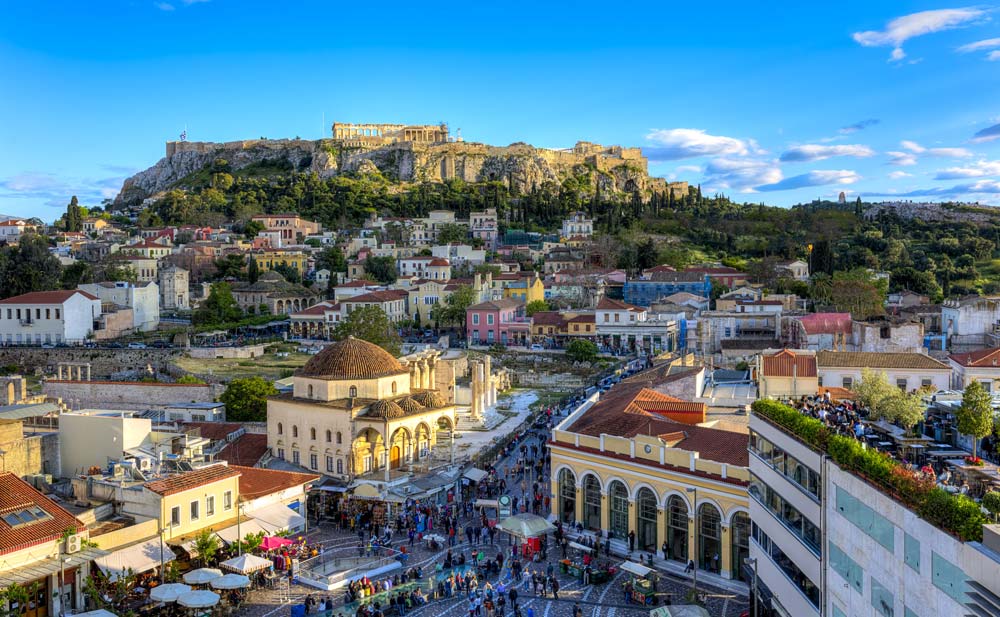
Piraeus, roughly translating to “the place over the passage”, is an important Greek port located within the Athens agglomeration, in the Attica Basin. It is 12 kilometers from the municipality of Athens, considered the fourth largest and is the third most populous amongst all the municipalities of Greece. Now a peninsula, Piraeus, originally a rocky island, was developed in early 5th Century B.C. when it was initially designated as Athens’ import and transit trade port. It is the largest marine-based shipping center of Greece, one of the largest ports in Europe, and considered the second largest passenger port in the world. Inhabited since the 26th Century, it wasn’t until the 6th Century B.C. that Piraeus began catching attention. The land of Piraeus was essentially impassable, flooded by the sea most of the year until centuries passed and the flooding ceased. By the 5th Century B.C. it became a navy base for the Athenian fleet for the natural harbors and the strategic potential they carried. Athenian general and politician Themistocles fortified Piraeus’ three harbors Kantharos, Zea and Munichia, created ship houses and completed his walls in 471 B.C., which led to the port becoming a great military and commercial harbor. There are many archaeological sites, points of interest and entertainment available in Piraeus. Most famous for its tavernas and cuisine, several popular events take place in Piraeus, such as the Ecocinema International Film Festival, the Maritime Festival, the Piraeus Rock Wave Festival and the Three Kings’ Way Festival. There are also many theaters, including the Municipal Theater, the open air Veakeio Theater, and the Menandreio Theater. Museums in Piraeus include the Archaeological Museum of Piraeus, the Merchant Shipping History Institute Exhibition, the Panos Aravantinos Decor Museum, the Georgios Averof Museum Ship and the Museum of Electric Railways. Be sure to catch the panoramic views available from the hill of Kastella, overlooking Athens and the Saronic Gulf!
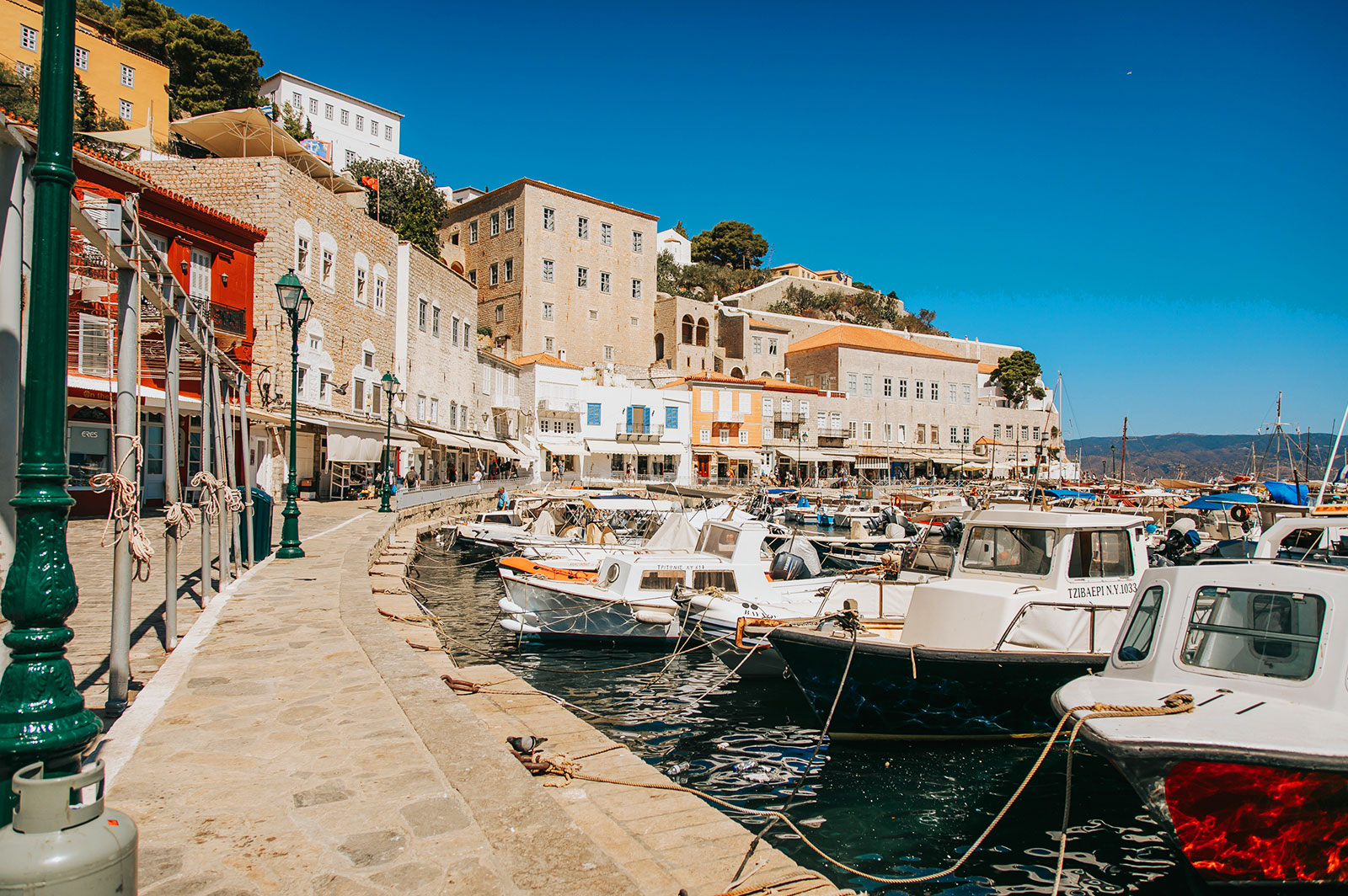
There is one main town on Hydra, known simply as "Hydra port". It consists of a crescent-shaped harbor, around which is centered a strand of restaurants, shops, markets, and galleries that cater to tourists and locals (Hydriots). Steep stone streets lead up and outwards from the harbor area. The charm of Hydra town certainly lies in her rich history, beautiful port and waterfront unspoiled by motorized vehicles. The island offers a rugged charm and some spectacular scenes and makes the perfect place for some self-exploration.
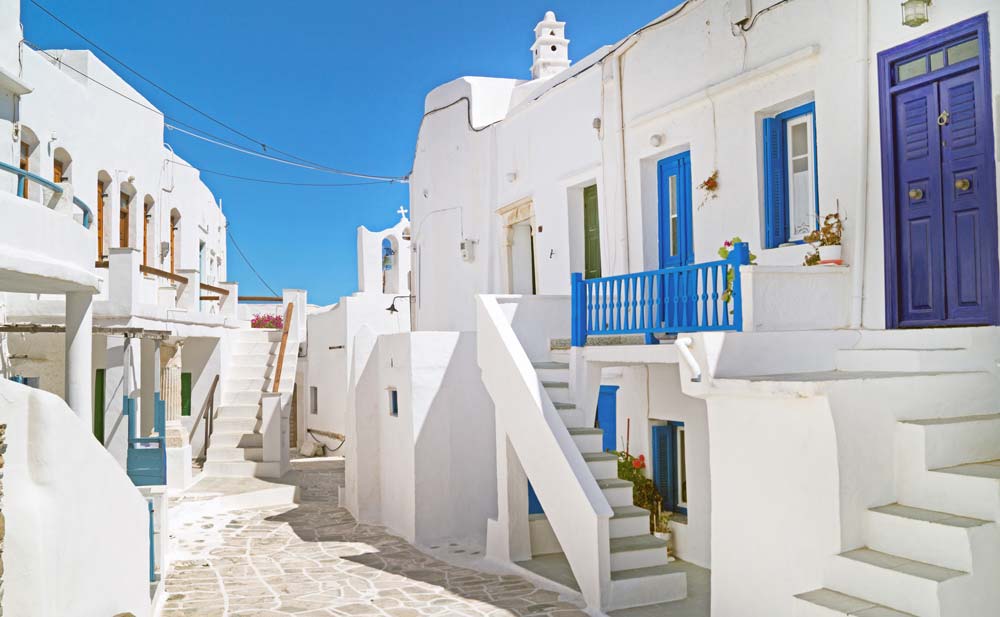
This Greek Isle's history dates back before the year 4000 BC. The island has a rich history of silver and lead mining and was one of the first places where currency minting occurred in Greece. Today, the island is frequented for its beaches, churches, festivals, food, and of course, classic Greek isle architecture.
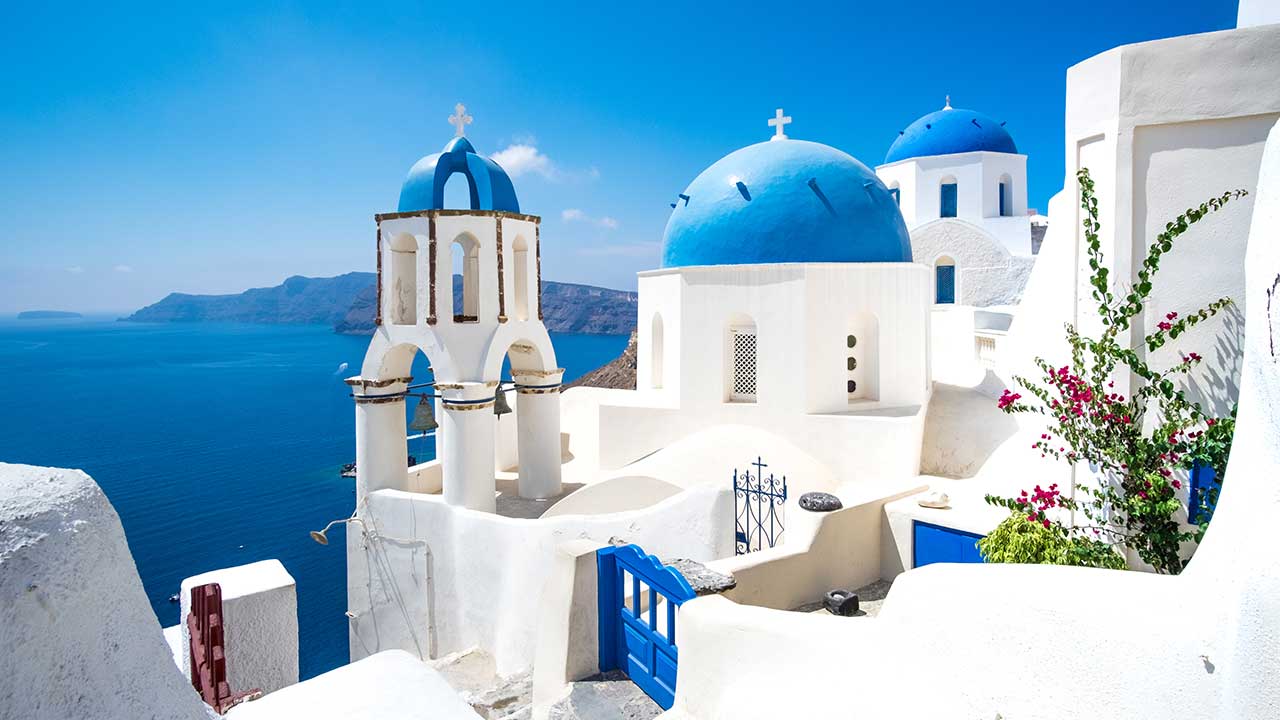
Santorini, officially named Thira, is the southernmost Greek island that is within the Cyclades archipelago, in the southern Aegean Sea. Part of the regional unit Thira, the municipality of Santorini is comprised of the island Santorini, Therasia, and other uninhabited islands of Christiana, Palaia Kameni, Aspronisi, and Nea Kameni. The geological history of Santorini is quite complex due to the area’s volcanism and is currently a water-filled caldera: a rectangular lagoon that is surrounded by three steep cliffs. The name Santorini is a contraction of the name Santa Irini, which is based on an ancient cathedral found in the island’s village of Perissa. This name was given by the Latin Empire in the 13th Century. During the Ottoman Empire, Santorini was called “Santurin” or “Santoron”, and in early times, it was named Kalliste, Strongyle, and Thera. Santorini is the site of the Minoan Eruption (also known as the Thera Eruption), one of the largest eruptions ever in recorded history. The origins of Plato’s story of Atlantis is believed to have a connection to this eruption that destroyed the early settlements on what was formerly a single island. The descriptions found of Plato’s Atlantis strongly resembles Thera, and with seismological, archaeological, and volcanological evidence, these claims are further supported. There is also speculation that the eruption is related to the Exodus of the Israelites, as well as causing the plagues described in the Bible in ancient Egypt. The economy is sustained by two principal industries: tourism and agriculture, and has recently been voted as one of the world’s most beautiful islands in various outlets such as the Traveler’s Choice Awards in 2015. The wine industry in Santorini is becoming more relevant as well, made up of Assyrtiko, Athiri and Aidani grape varieties, which is best exemplified in Vinsanto (“holy wine”) which contains all three Aegean varietals. Although Santorini is highly arid, it’s unique ecology and climate allows it to grow unique and prized produce, such as cherry tomatoes, Lathyrus clymenum (a legume), and capers. Thus, tourists indulge in local specialties such as Brantada, Fava, and the traditional dish Santorinio Sfougato.
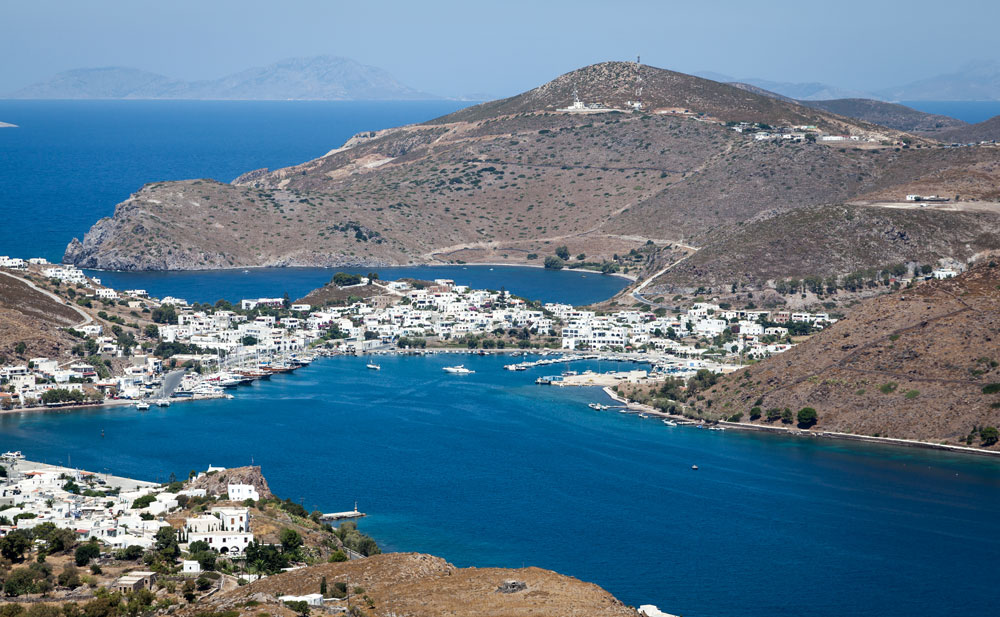
Patmos is in the South Aegean Islands, particularly a member of the Dodecanese Islands of Greece. It is north of Leros and is most known for its connection to John the Apostle from the Book of Revelations; therefore Christian pilgrims frequent this destination. In mythology, Patmos was named “Letois”, which is another named for the goddess Diana, Leto’s daughter. Since ancient authors seldom mention Patmos in early text, information on early inhabitants is limited. It is widely believed the original people of Patmos were the Carians from Asia Minor, as discovered by the earliest archaeological findings date back to the Bronze and Mycenaean periods. The mountain in the country of Caria was named Latmos, which is where historians believe the name Patmos is derived from. Dorians also colonized in Patmos, and over time, Ionians followed suit. The primary port in Patmos is Skala, which was one of the most important sea ports in the Mediterranean around the 16th century. Early Christian basilicas were constructed in the name of John of Patmos, however between the 7th and 9th century when Saracen attacks were still problematic, the Grand Royal Basilica was destroyed. A monastery began construction in 1101 when Christodoulos assumed authority over Patmos. The population began expanding as immigrants from the fall of Constantinople and Candia to place in the 15th and 17th centuries, respectively. The island was under the Ottoman rule for years and was interrupted by Venice during the Candian War, Russia during the Orlov Revolt, and Greece during their War of Independence. During the Italo-Turkish War, Italy occupied Patmos until 1943, when Nazi Germany held power over the island until 1945. Since Patmos rejoined in 1948, it has become the tranquil and frequented destination it is now. Tourists visit the Monastery of St. John, Chora, the Cave of Apocalypse, Psili Ammos Beach and other beautiful points of interest in “Europe’s most idyllic place to live,” as named by Forbes in 2009.
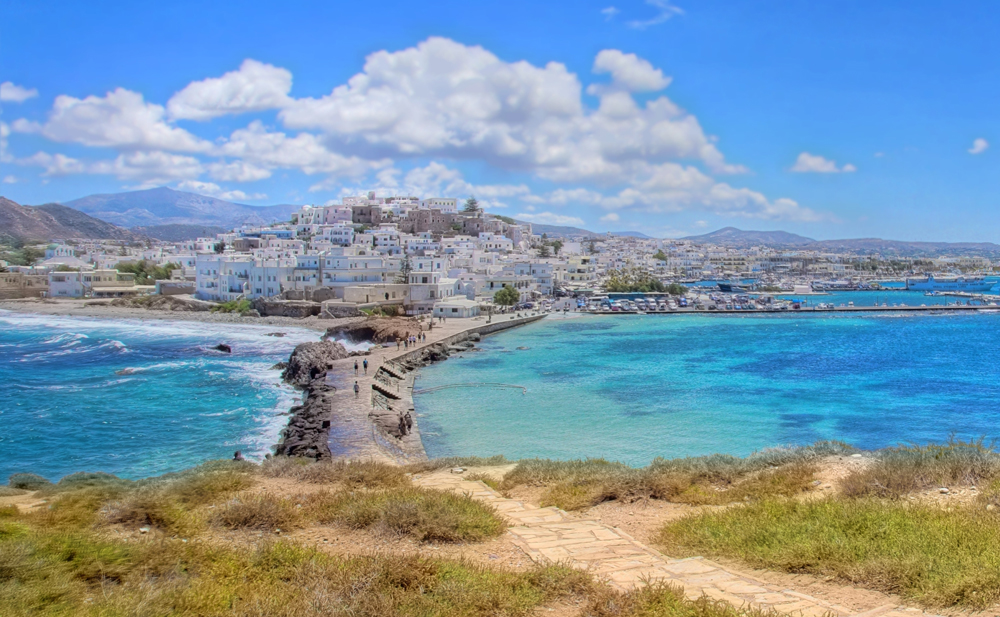
Nestled in the South Aegean Sea, the island of Naxos boasts a fertile landscape that hosts a mix of serene towns, ancient ruins, family-run tavernas featuring locally produced delicacies, and long stretches of beach. According to Greek mythology, Dionysus, the god of wine, loved Naxos so much that he made its land fertile and full of vineyards, lending itself to locally produced varietals. Agia Anna Beach, located on the island’s west coast, is perfect for a swim; for the more adventurous, explore the sea caves that line its azure waters. The island’s most historic site, the Portara, was constructed in 530 BC as a giant doorway to the never-completed Temple of Apollo.
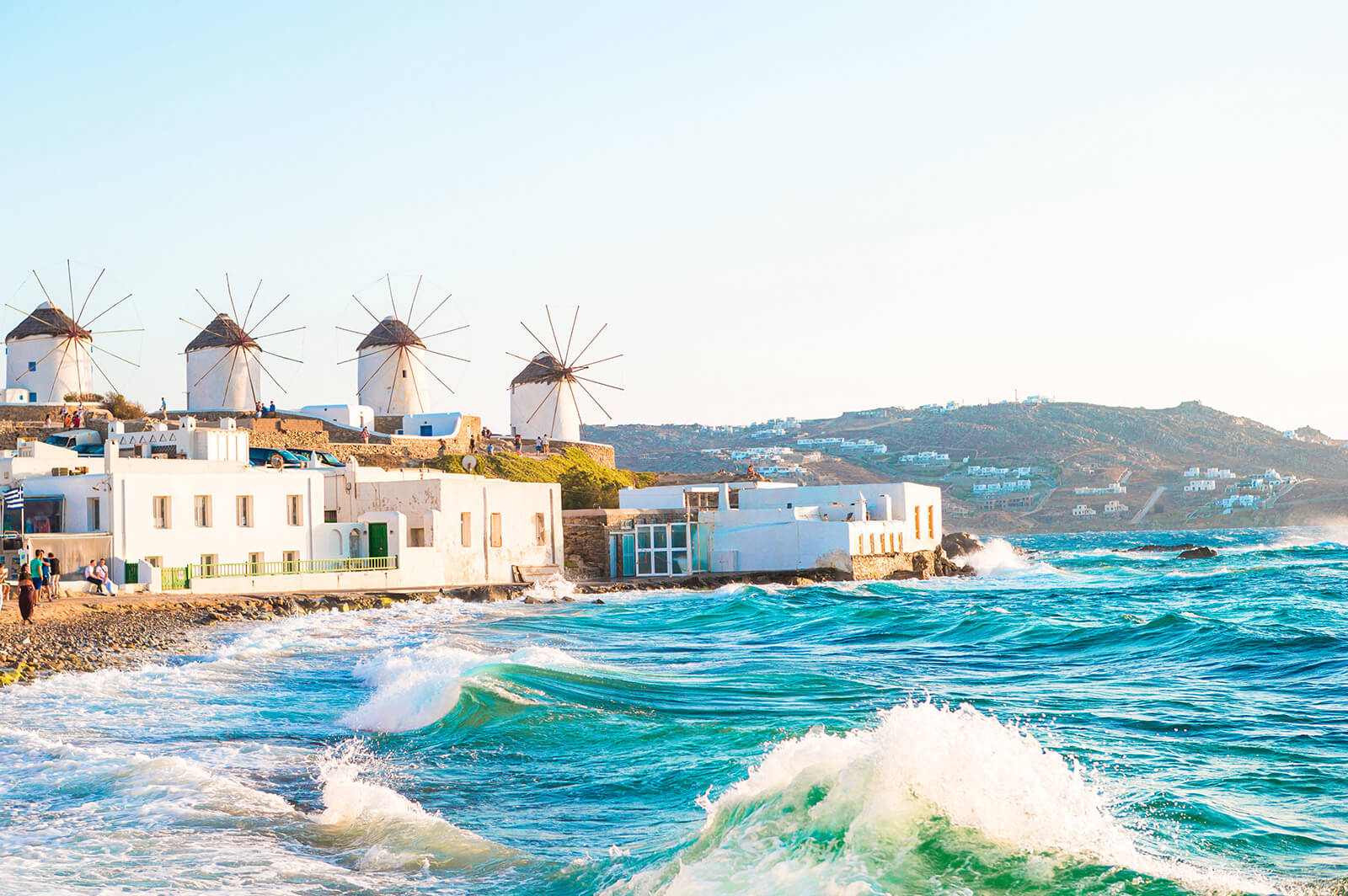
Mykonos is one of the most visited Greek Islands. It is part of the Cyclades group and lies between Tinos, Syros, Paros and Naxos. The island spans an area of 85.5 square kilometers (33.0 sq mi) and rises to an elevation of 341 meters (1,119 feet) at its highest point. Mykonos is so incredibly beautiful; it is not surprising that it has become one of the most desired destinations in the world. When you also add the cosmopolitan lifestyle, the sophisticated nightlife and the historical treasures of the nearby UNESCO Awarded Delos you’ll have the recipe for an unforgettable holiday. SeaDream usually anchors just of the famous windmills and tenders directly to the old town. Guests have a few organized options including the Sacred Island of Delos. Others may simply want to explore the island’s incredible beaches, boutiques, clubs and churches independently.
Suites & Staterooms
*Single Supplement for this voyage is 200% for Yacht Club Deck 2, 3 and 4. For Commodore, Admiral and Owners Suite, a 200% single supplement rate applies.
Government, Port, Document Issuance, Handling & Service fees: $427 per guest (included)
Please Note: Fares are capacity controlled and may change without notice. The fares are per person based on double occupancy. Single and third person rates are also available. SeaDream Yacht Club strongly recommends that all guests purchase travel insurance.
Yachting Land Adventures & Activities
Please check back soon for updates.
Testimonials
The ship is amazing but the icing on the cake was the wonderful staff. Mr & Mrs SouthonGreat Britain
This was undoubtedly the best trip my wife and I have ever had. Thank you for this amazing experience. Mr & Mrs FilhoBrazil




